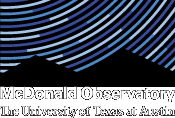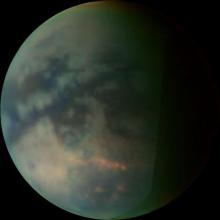Milestones
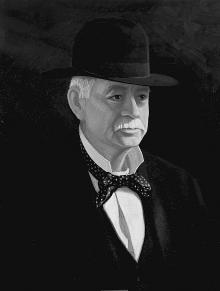
1926
W.J. McDonald BequestParis, Texas banker William Johnson McDonald left the bulk of his fortune to The University of Texas at Austin “for the purpose of aiding in erecting and equipping an Astronomical Observatory to be kept and used in connection with and as part of the University for the study and promotion of the study of Astronomical Science.”
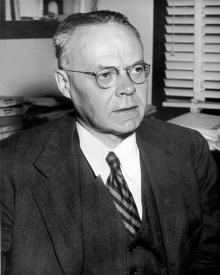
November 1, 1932
Otto Struve DirectorshipAstronomer Otto Struve was the first director of McDonald Observatory. He served from November 1932 to August 1947, and was concurrently director of The University of Chicago's Yerkes Observatory.
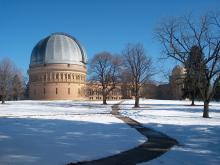
November 23, 1932
University of Texas Partners with University of ChicagoWhen The University of Texas at Austin received W.J. McDonald's bequest for building an observatory, it had no astronomy department. The University of Texas entered into an a agreement with the University of Chicago, which had many fine astronomers and its own Yerkes Observatory. The deal allowed for the University of Chicago to operate McDonald Observatory for 30 years.
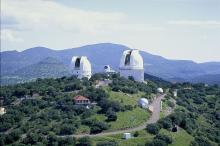
April 17, 1933
Donation of Mount LockeMrs. Violet Locke McIvor donated the mountain upon which now sit most of McDonald Observatory's telescopes. Previously called "Flat Top" or "U Up and Down Mountain" (for the ranch in which it sat), it was renamed Mount Locke in honor of Mrs. McIvor's grandfather. Dr. G.S. Locke of Concord, New Hampshire, was the founder of the ranch.
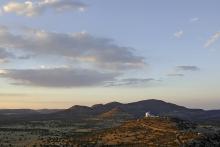
August 3, 1933
Donation of Mount FowlkesAfter receiving the donation of Mount Locke (previously called Flat Top) as the site for the new observatory, planners thought they should acquire the nearby smaller mountain (Little Flat Top) for possible future expansion. They received the donation from the estate of Fort Davis Judge Edwin H. Fowlkes, for whom the mountain was re-named. Decades later, the Hobby-Eberly Telescope (one of the world's largest optical telescopes) was built atop Mount Fowlkes.
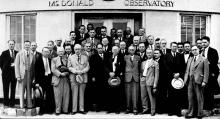
May 5, 1939
Dedication of McDonald Observatory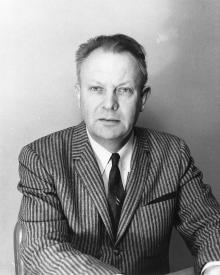
September 1, 1947
Gerard Kuiper DirectorshipAstronomer Gerard Kuiper served as director of McDonald Observatory for approximately two years.
1951
Bengt Strömgren DirectorshipBengt Strömgren served as director of McDonald Observatory from January 1951 through August 1957.
1955
Improving the ViewHarold Johnson and W.W. Morgan devised a system for measuring the colors of stars. The system, which is still in use today, allows astronomers to remove the effect of interstellar dust, which makes stars look redder.

September 1, 1957
Second Kuiper DirectorshipGerard Kuiper served a second time as director of McDonald Observatory from September 1957 to March 1959.
April 1, 1959
William W. Morgan DirectorshipWilliam W. Morgan served as director of McDonald Observatory from April 1959 to August 1963. He was the final McDonald director from the University of Chicago.
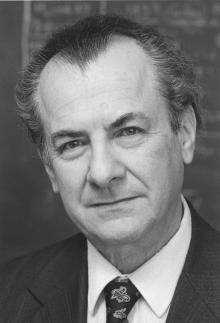
1963
Shape of the Milky WayGerard De Vaucouleurs proposed that the Milky Way galaxy is a barred spiral, with spiral arms extending from a long “bar” of stars in its center.
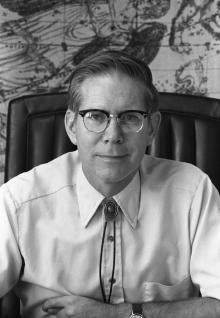
September 1, 1963
Harlan J. Smith DirectorshipHarlan J. Smith was the first University of Texas director of McDonald Observatory, and served simultaneously as chair of the new astronomy department in Austin. Among many other accomplishments, he led the construction on the 107-inch telescope that now bears his name. More information on Harlan J. Smith is available on his University of Texas memorial page.
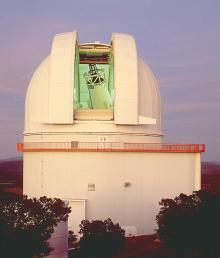
1968
Dedication of the 107-inch TelescopeDedication of the 107-inch (2.7-meter) Telescope. It was later renamed the Harlan J. Smith Telescope in honor of the observtory director responsible for its construction.
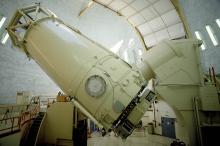
1969
Coude Spectrograph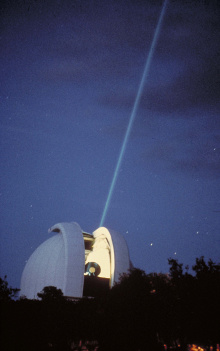
1969
Bouncing a Laser Off the MoonOne month after Neil Armstrong took the first “small step” on the Moon, McDonald Observatory bounced a laser beam off a reflector left on the Moon by Apollo 11. The experiment measured the Earth-Moon distance with an accuracy of a few inches.
1970
Invention of High Speed PhotometryAn instrument developed by R. Edward Nather opened a new field of astronomy, high-speed photometry. It allows astronomers to measure changes in an object’s brightness on timescales of a thousandth of a second or less. Among other things, it has been used used to discover rapid pulsations in white dwarfs, the “corpses” of once-normal stars like the Sun.
1976
Sizing Up the StarsTom Barnes and David Evans published a method for determining a star’s size by measuring its brightness and temperature. Known as the “surface brightness relation,” it is still a commonly used technique today.

October 1, 1978
StarDate Radio Program DebutsMcDonald Obervatory's StarDate radio program debuted on the nation's airwaves, initially funded by a grant from the National Science Foundation. Today, StarDate is the longest running, nationally syndicated science show on radio. It currently airs on more than 300 stations. More information is available at StarDate Online.
1982
W.L. Moody Visitors Information Center openedThe W.L. Moody Visitors Information Center opened in 1982. For two decades, it served thousands of visitors to McDonald Observatory.
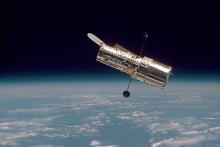
1991
Helping with Hubble Space TelescopeNASA launches Hubble Space Telescope, which was developed and planned with the input of several University of Texas astronomers and engineers. In particular, Fritz Benedict and Bill Jeffreys led a team developing the telescope's Fine Guidance Sensors, which allow it to point precisely at cosmic targets. Today, McDonald astronomers routinely use Hubble and other space-based telescopes in their research.
1991
Frank N. Bash DirectorshipAstronomer Frank N. Bash served as director of McDonald Observatory from 1991 to 2003, and served two years as interim director from 1989-1990.
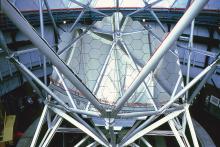
1997
Dedication of Hobby-Eberly TelescopeThe innovative Hobby-Eberly Telescope was dedicated. It uses a mosaic of 91 individual mirror segments to create a primary mirror with an effective light-gathering power of a single 9.2-meter mirror.
2002
First Planet Orbiting a Close Binary StarUsing the Hobby-Eberly Telescope, McDonald astronomers including Bill Cochran discovered the first planet orbiting a close-together binary star system. It is one of many exoplanet discoveries made at McDonald.
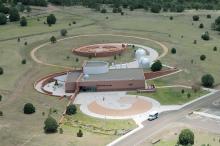
April 6, 2002
Frank N. Bash Visitors Center opensThe 12,000-square-foot Frank N. Bash Visitors Center opened. Originally called the Texas Astronomy Education Center, it features an interactive exhibit, 90-seat theater, cafe, gift shop, and outdoor telescope park and amphitheater. It was later renamed the Frank N. Bash Visitors Center for the the former director of McDonald Observatory.
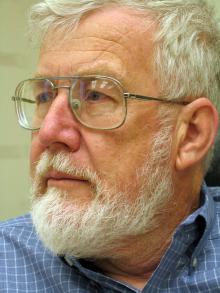
2003
David Lambert DirectorshipDr. David L. Lambert became director of McDonald Observatory in 2003. Lambert also holds the Isabel McCutcheon Harte Centennial Chair in Astronomy, and has been a professor at The University of Texas at Austin since 1969. He retired as observatory director in 2014.
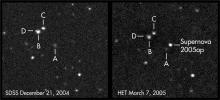
2005
Most Powerful SupernovaAn automated search using a McDonald telescope discovered the most powerful supernova to date, Supernove 2005ap.The exploding star briefly shone 100 billion times brighter than the Sun. The Texas Supernova Search project was run by University of Texas graduate student Robert Quimby using the ROTSE IIIb telescope at McDonald.
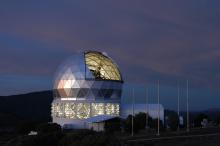
2007
Dark Energy SearchMcDonald astronomers Gary Hill and Karl Gebhardt began developing the Hobby-Eberly Telescope Dark Energy Experiment (HETDEX). It will examine more than one million galaxies to probe the nature of dark energy, which is causing the universe to expand faster as it ages.
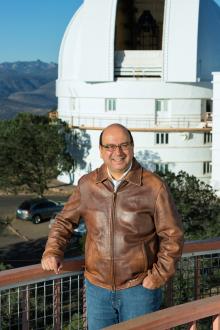
June 1, 2014
Taft Armandroff DirectorshipTaft Armandroff became director of McDonald Observatory on June 1, 2014. He had previously served as director of the W.M. Keck Observatory in Hawaii. Armandroff's research specialties include dwarf spheroidal galaxies, stellar populations, and globular clusters.
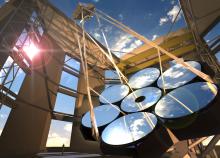
June 3, 2015
Construction Begins on Giant Magellan TelescopeEleven international partners, including The Univesity of Texas at Austin, announced June 3, 2015, that they had approved the start of construction on the Giant Magellan Telecope (GMT). The telescope is poised to become the world's largest. It is expected to see first light in 2021 and be fully operational by 2024.

